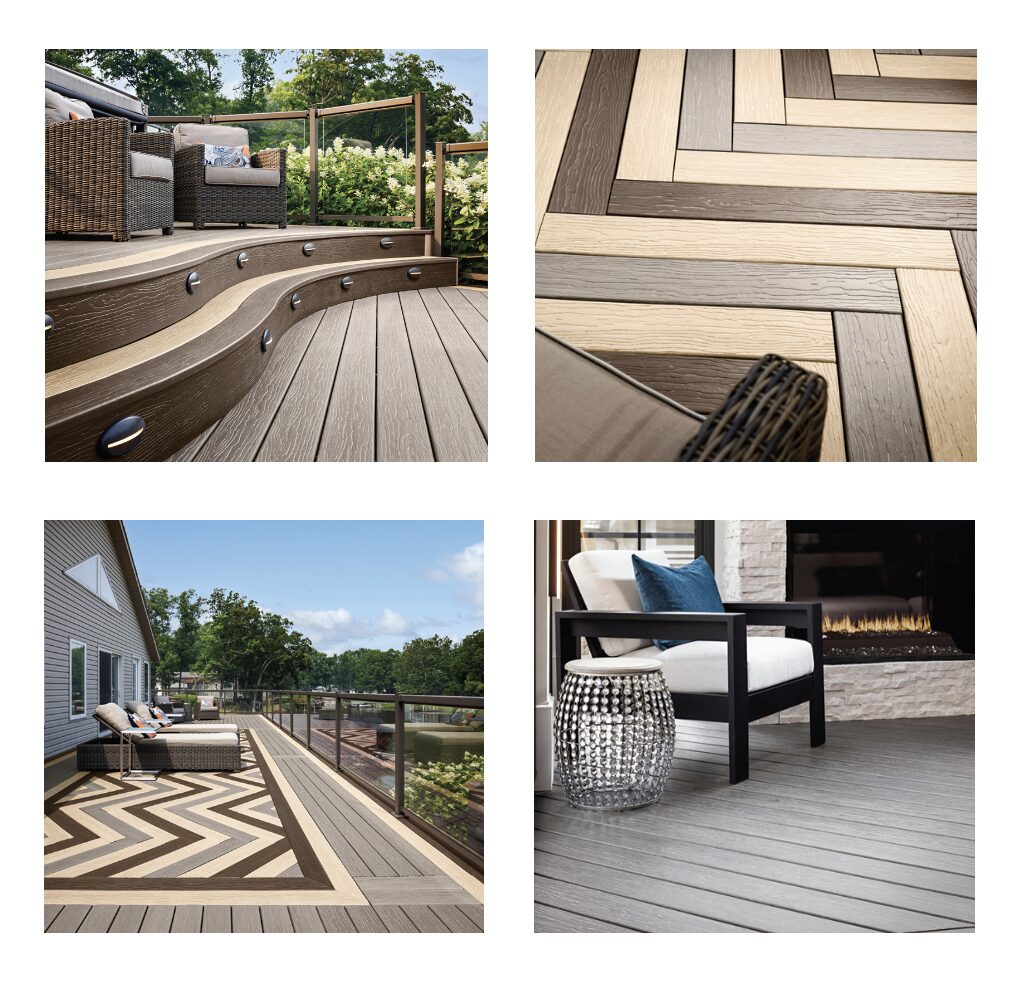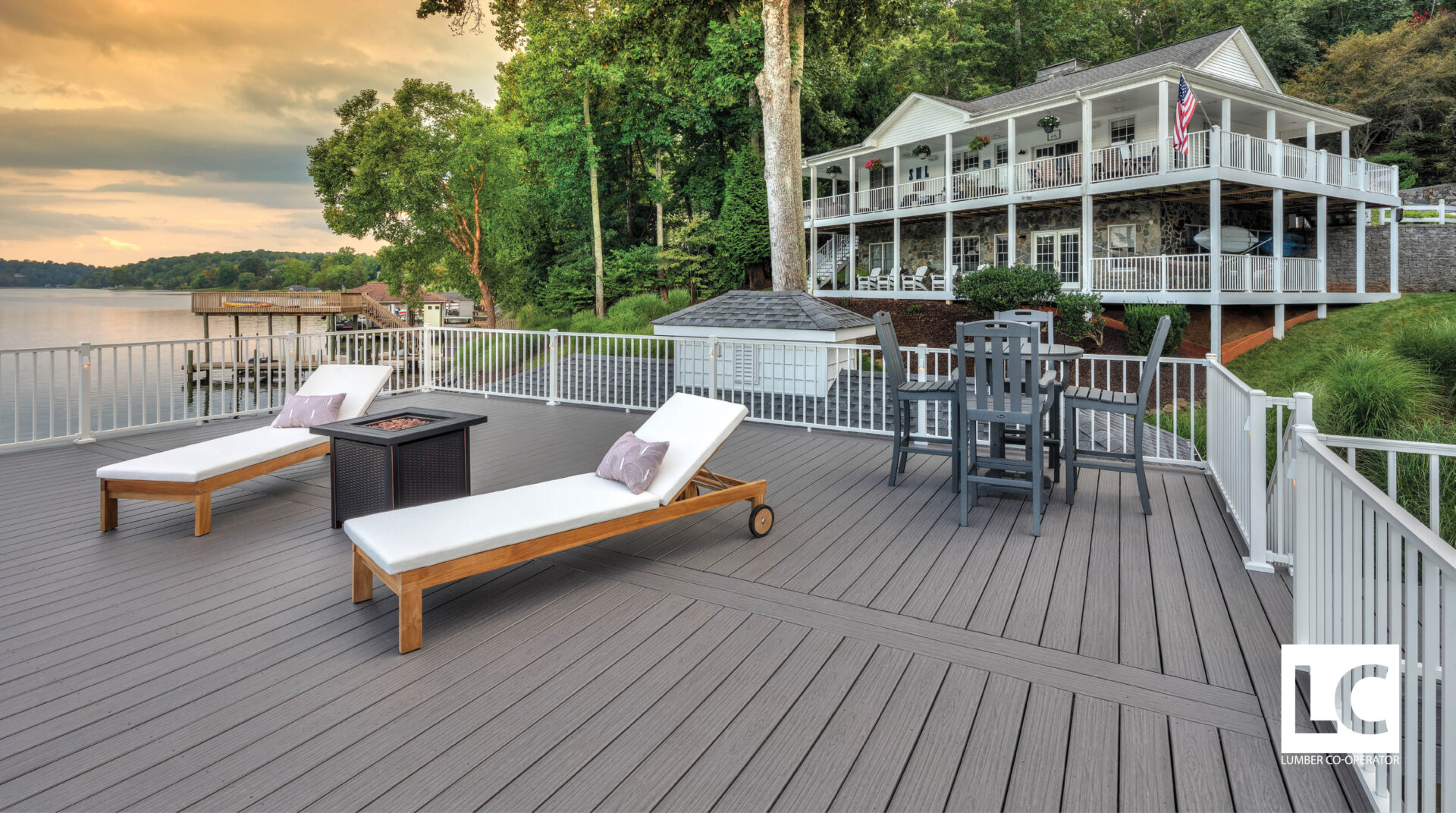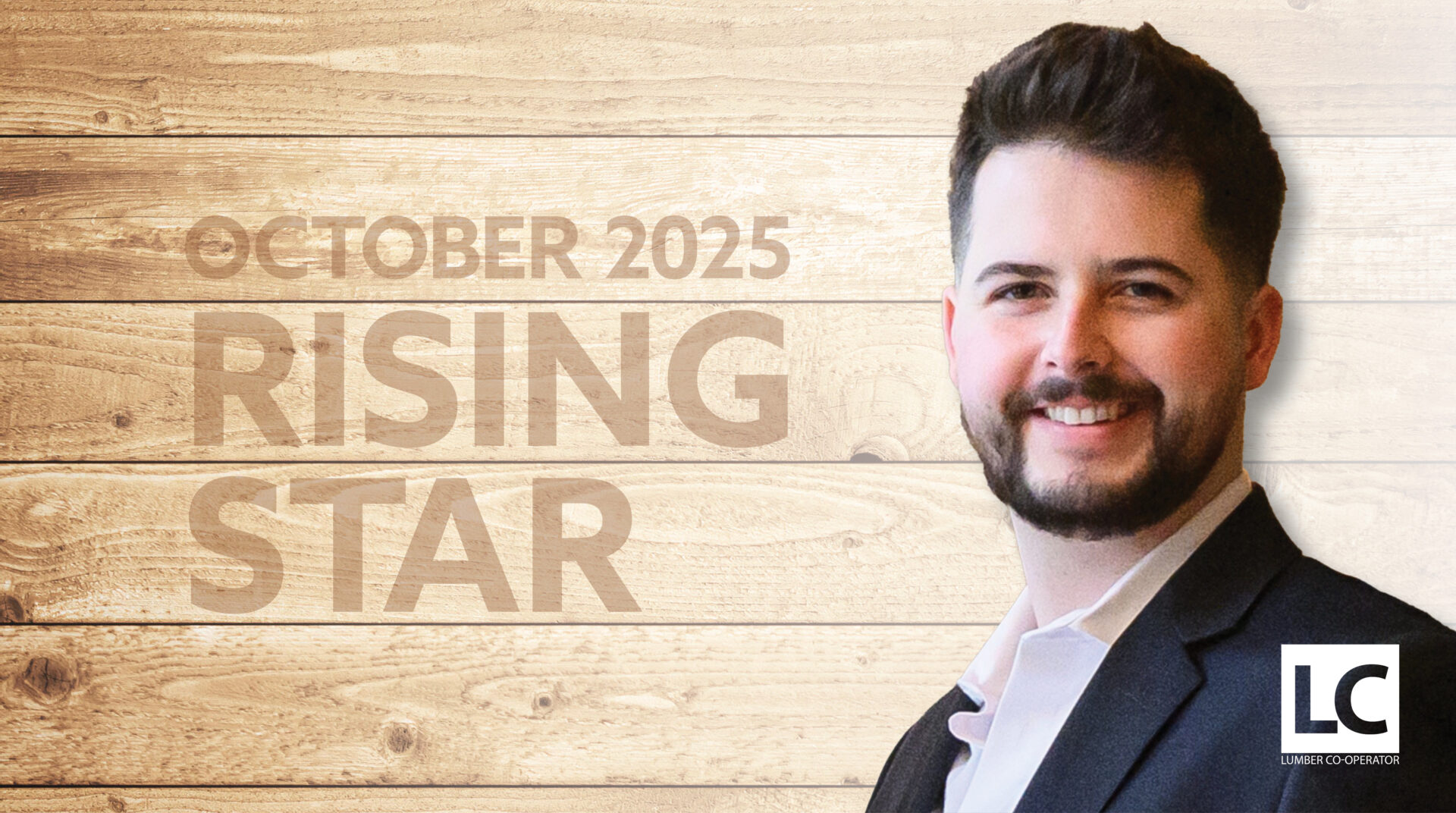The outdoor living market has been on an incredible high since 2020. Outdoor spaces are now an almost standard part of residential construction, while commercial spaces increasingly integrate green spaces and other features to encourage spending time outdoors.
As we look ahead, shifts in the market are shaping outdoor living investment and how outdoor living suppliers meet the needs of both residential and professional consumers. As priorities and budgets change, new trends emerge. Some of the 2025 trend predictions are not much of a change, but rather a continuation and refinement of innovations in the outdoor living market and how they’ve shaped outdoor design.
2025 Decking and Outdoor Living Trends
Decks remain a fundamental component of residential outdoor design. Several decking innovations have been introduced in the last few years, which are now shaping broader trends and design choices.
We’ve identified four key trends in decking, as well as complementary and accessory products, that will be popular in 2025.

1. Safety Enhancements
Safety is paramount when creating an outdoor living space, particularly for households with children, pets, or seniors. A wooden deck that is exposed to the elements requires frequent, intensive maintenance—like sanding, staining, or painting; otherwise, it will splinter, warp, and rot over time. Composite and PVC decking materials require much less maintenance to maintain safe conditions.
Wood or other decking materials can become extremely hot under direct sunlight, which poses risks for bare feet (and paws). To address this, you can find composite decking solutions that have enhanced cooling technology. A leading composite decking manufacturer currently offers composite and PVC decking solutions that reduce heat absorption by as much as 35%. Not only does this make the deck more comfortable, it enhances overall safety, so the whole family can enjoy the outdoors.
In addition to decking, there are complementary products for a safer outdoor living space. Railing is a great addition around any deck, especially if the space contains a pool or must meet certain HOA or permit requirements. There are multiple styles and color options available today that will match every design style.
2. Texture and Color Offerings
Even if budgets are tighter or spaces are smaller, homeowners strive for a level of customization and personality in outdoor designs. The innovation of new textures and color options in composite decking materials, as well as other outdoor living solutions like hardscapes, brings a level of personalization to design without breaking the bank.
Composite decking combines materials, including recycled plastics and wood components, to deliver superior performance without the hassle of traditional wood. Thanks to advancements in R&D, composite decking can deliver a natural woodgrain finish that requires little maintenance. Woodgrain textures provide a classic aesthetic that works with any design. In addition to composite decking, other outdoor living products can be implemented in the design for increased texture and visual interest. Pavers now come in a variety of textures, which can pair with decking and varying fencing finishes for a truly unique outdoor design.
Color has also become a chief design element over the past several years. Overall, preferences have moved toward cooler palettes with dark accents, but regionality plays a large role in color selection. Offering color options in both warm and cool tones is important to fit regional preferences and design aesthetics.
3. Flexibility, Versatility, and Durability
Functionality is important in today’s outdoor living spaces. Attitudes shifted from utilizing outdoor living areas for entertaining to incorporating them into everyday life. Using products that tie into the flexibility and versatility of the space only makes it that much more functional.
New products like grade-level decking systems make it easier than ever to create a deck that serves multiple purposes. Look for systems that use strong and durable tile foundations that snap together to create a freestanding, ground-level deck on any flat surface with minimal tools. They can typically be installed on grass, concrete, or even existing patio surfaces and work with other decking materials for a finished look.
Railing also enhances an outdoor space’s functionality, making it safer and more accessible for everyone. There are more options on the market, so you can find something that fits perfectly with any preferred style. Innovative products like a cable railing system are quick to install and won’t obscure views.
Durability is also a key consideration in selecting outdoor products. Wooden decks don’t have the longevity of a composite or PVC deck, as they are more prone to extreme wear and tear without proper maintenance. New composite and PVD decking technologies are enhancing the strength and resilience of composite deck boards, so they last even longer and are a superior choice.
4. Design Options + Accents
While a deck or patio can certainly stand on its own, it’s often the finishing touches that truly make it feel like home. Pergolas have never gone out of style and are a great addition to add more privacy and shade on the deck. As with decking, there are alternatives to wood that are more stylish and durable. Metal and aluminum pergolas are available with side walls to add extra privacy, and you can also add decorative touches like plants or fabric.
Decorative screen panels are also becoming more popular in outdoor living spaces. Typically made from metal or aluminum, they include graphic elements for a design-forward touch while still increasing privacy. Panels can be installed in a variety of applications to complement any deck or patio space.
Matthew Bruce is the vice president of sales, building products distribution for Barrette Outdoor Living and MoistureShield—an Oldcastle APG Company.







